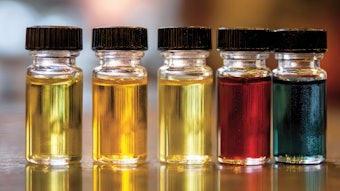During the last quarter century, the aroma chemical industry has grown into a multibillion-dollar activity. Unprecedented growth in world population naturally increased the demand for newer food products, cosmetics and toiletries, both qualitatively and quantitatively. This, in turn, led to the search for new and abundant raw materials and development of more efficient methods of their conversion to aroma chemicals, which are indispensable constituents of flavour and perfumery compositions. New technologies based on developments in synthetic organic chemistry have contributed significantly to the phenomenal growth of the aroma chemical industry.
Raw Materials for Aroma Chemicals
A large number of flavour and perfumery chemicals in use are based on oxygenated functional groups--alcohols, esters, ethers, carbonyl compounds—and occasionally their sulfur analogs. Compared to the corresponding hydrocarbons, these functionalised derivatives are relatively stable, soluble in water-based foods and have desirable flavour characteristics.
The hydrocarbons, on the other hand, have quite the opposite properties and, when they co-occur in nature along with the oxygenated compounds (as in, for example, terpenes in citrus oils), they are profitably removed. But, for some reason, nature found it fit to accumulate more hydrocarbons. Thus, the citrus oils, mentioned above, generally contain 80-98% of terpenic hydrocarbons, mainly d-limonene. Turpentine as a source for α-pinene and β-pinene is well known; 3-carene is the major constituent of Indian turpentine. Isoprene, the building block of terpenoids, is available in large quantities from the petrochemical industry. The petrochemical industry is also the source of several other industrially important aliphatic and aromatic hydrocarbons such as ethylene, propylene, toluene and ethylbenzene.










